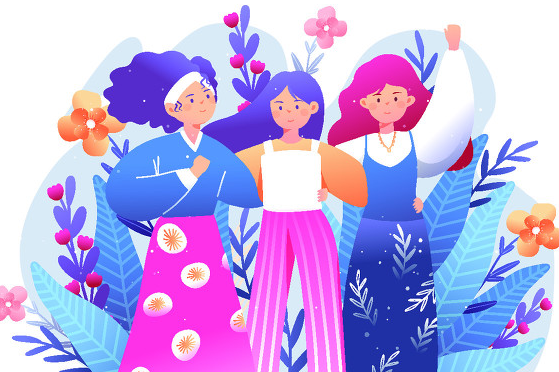Vision helps shape village's future


Embroidery skills allow Miao people from Hunan province to bring delicate needlework alive and enable visitors to have an interactive experience with traditional ethnic culture during their stay, Yang Feiyue reports.
Seen from afar, low-rise buildings featuring white walls and gray tiles huddle together amid stretchy green farmlands across which a river meanders through a valley.
On both sides of the valley, mountains covered by lush trees reach up to the sky, blocking the outside chaos and bringing a pastoral and tranquil vibe.
It is the first impression one gets when arriving at Zhonghuang village, Jishou city, Xiangxi Tujia and Miao autonomous prefecture, in Central China's Hunan province.
The village boasts a history of more than 700 years and is home to mostly ethnic Miao people and over 60 distinctive folk houses that were built on stilts of different heights beside the river or in steep mountain areas.
This stunning view and profound ethnic heritage has prompted Yi Hua to tap into her expertise in Xiang embroidery and add to the rural charm to draw in visitors and boost tourism.
"All the rural architecture and natural landscape scenery has been very well preserved," says Yi, who was born in the prefecture and has practiced Miao embroidery for more than a decade.
However, due to lack of industrial development, many young people used to leave home to make a living in the cities, leaving their elderly parents and children behind.
The village conditions are perfect for what Yi has been doing in recent years — carrying forward ethnic culture, especially Miao embroidery.
That was why she and her team started to work on the design and tourism operations of the village last year.
"We hope to retain the village's existing scenery and ethnic images, and industrialize Miao embroidery, batik and cloth-weaving in the village to revitalize traditional ethnic culture," Yi says.
The goal is to enable visitors to have an interactive experience with traditional ethnic culture during their stay in the village and thus feel the place is "a home away from home", Yi adds.
Yi has given Miao embroidery training to local villagers, who are now wearing Miao costumes daily and can be spotted weaving with old-fashioned wooden looms or embroidering traditional animals and plants patterns on dark blue cloth.
Yi and her team are also working to develop an ethnic intangible cultural heritage corridor in the village that will open to the public this summer vacation.
In addition, more Miao elements have been applied to the overall village renovation.
"For example, the butterfly is an important totem of the Miao people, and it symbolizes motherhood and love, so we have made a point of integrating butterfly elements in local architectural design," Yi says.

The village transformation is part of the project Valley Residents, an effort by Yi and her team to use local ethnic elements in rural settings to promote the tourism and culture industries and improve villagers' income.
Yi has developed a predisposition toward Miao embroidery and related culture as she was immersed in many ethnic celebrations throughout her childhood in Xiangxi.
"Whenever I saw the ethnic Miao costumes, I was deeply attracted to the embroidered flowers," Yi recalls.
The ethnic culture influence planted seeds of passion in Yi's heart for embroidery and saw her develop a knack for painting.
However, she didn't follow her heart and pursue an art career at the beginning. To provide for her family, Yi studied communication technology in college in the provincial capital Changsha and worked at a local telecommunications company after graduation.
Fortunately, she kept up with her painting and dipped into Miao embroidery in the interim.
"The more I practiced, the more my interest grew," she says.
In 2009, Yi finally listened to her inner voice and quit her steady job, and went to Shanghai and Guangzhou, Guangdong province, to study design professionally.
After two years of learning, Yi came back to Xiangxi and opened up her own workshop by renting a discarded warehouse of barely 10 square meters and setting up two sewing machines inside.
"I basically lived and worked at the workshop," Yi recalls, adding that she had to take care of everything, from fabric procurement and design to sewing and marketing.
As she honed her skills, Yi worked her way up to becoming a prefectural inheritor of Miao embroidery.
In 2012, Yi developed formal attire that integrated ethnic elements with modern tailoring, which turned out to be a sensation at a major government celebration event.

Seeing Yi's commitment to her cause, her husband Lin Jie, a businessman, joined forces and the couple established Valley Residents.
"I also picked up on the trend of the culture and tourism industries," Lin says about the reasons behind his decision to work with his wife.
The couple gave the project the name, which refers to a group of children growing up in the depth of the mountains of Xiangxi hoping to use all their strength to explore, protect and inherit the intangible cultural heritage of the local ethnic group.
"Through the creative power of design, we aim to express the beauty of our ethnic culture in a way that modern people are willing to accept, allowing the beauty of our ethnic culture and the spirit it carries to emerge from the deep mountains and reach out to the world," Yi says.
The project has set up ethnic craft cooperatives, including the Miao embroidery ones, in several villages of Hunan, and gives training to more than 1,000 embroiderers.
More than 2,000 village women have found jobs through Yi's project and have had their income increased by 10,000 yuan ($1,400) to 30,000 yuan.
Miao embroidery products from Valley Residents have been sent by the Ministry of Foreign Affairs as gifts to senior foreign diplomats and experts, and were showcased at international events, including the 2015 World Expo hosted by Milan, Italy.
As Yi worked with locals from various villages, she found many of them had rich natural resources, ethnic culture and history, so her team started to engage in culture and tourism planning and design in those villages under the support of the local government.
The operation in Zhonghuang village is one of the first independent endeavors by Yi and her team to empower rural tourism through culture. In the future, Yi says her team will continue to extend the Miao industry by combining agriculture, study tours and Miao food, so the village can be an ideal model of life for visitors from outside.
Although inheriting and developing innovations in ethnic intangible cultural heritage is a slow process, Yi says it's worth it.
"You can do many things throughout a lifetime, but it's not easy for everyone to have the opportunity to come across something meaningful, like intangible cultural heritage, which is actually the DNA of local culture and carries its spirit," Yi says. "It's our dream not only to fully express our design enthusiasm and technology in the village, but also sincerely work with villagers to jointly promote rural tourism and ultimately realize common prosperity."
Zhu Youfang contributed to this story.
Contact the writer at yangfeiyue@chinadaily.com.cn




